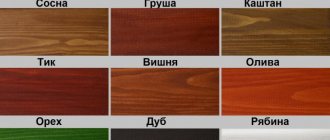A proven fact is the visual expansion of space with the help of white and its shades, the ability to make the room brighter and freer. But in practice it turns out that working with white is quite difficult. It depends on the color of furniture and decor, shadows from large objects in the interior, natural and artificial lighting, the color of curtains and many other factors. Therefore, when completing the interior, if you act rashly, it is possible to get a result that is not at all the one you expect!
Choosing the right shade of white
The first problem may arise already at the place of purchase of wall paint, since white is not one specific color, but a whole range, a set, if you like, a family of shades, which consists of dozens of different tones, matte and glossy, warm and cold, bright and dim. The general list includes sterile white, pearl and porcelain, frosty white and snow color, milky, cream and ivory, as well as opal, moonlight, coconut... and also the color of white chocolate or sea foam, flour, pearl, the color of paper and parchment. It’s very easy to get confused, especially when you don’t understand the combinations of white with other colors and shades well, and you don’t know how external factors can influence a given color, giving it different shades!
Warm white color is not suitable for decorating a room in minimalism, but goes well with the requirement of building a visual picture in pastel colors;
Dazzling white colors are more consistent with restrained styles and decorations, but are cold. Therefore, such rooms require more natural lighting with sunlight;
Pearl white and ivory soften aggressive sunlight if the room, for example, has panoramic glazing!
Such problems can be solved by carefully studying the color matching tables and comparing possible shades of paint for the walls. In addition, the issue is decided by a combination of shades, but only the right one, with a certain contrast between white colors of different shades and depths. An example would be a combination of cool white tiles, frosty northern colors and walls that are painted in warmer colors with hints of gray tint!
Water emulsion
The water-based type is popular for indoor work. It is applicable only for interior work; it is not suitable for exterior work due to the presence of water, which cannot withstand natural influences. The following advantages can be highlighted:
- It does not emit an odor, so there is no need to additionally protect the respiratory tract when painting;
- Eco-friendly, no toxic substances in the composition;
- Easy to apply;
- Plain water is suitable for dilution;
- High hiding power;
- Durable;
- Quick-drying;
- Reasonable cost;
- They are easy to wash off from hair and skin if some of them get on them during dyeing.
The water-based type is popular for indoor work.
White matte or glossy
Wall paint differs not only in color and shade, but also in the degree of gloss. Experts distinguish several positions at once, including high-gloss paint, standard glossy and semi-gloss, semi-matte, matte and deep matte. But in a wide range of work, work often happens with glossy and matte materials.
- The matte surface absorbs light better and also has the ability to partially hide minor imperfections in the walls. Matte white paint gets dirty faster, but if you choose white walls for your home, you should be prepared for such costs;
- The glossy white surface is more elegant, festive, bright and durable. But it seriously emanates cold air, so not everyone may like such walls!
If we talk about the material for painting walls, craftsmen often choose water-based paints. They are distinguished by practicality, ease of use, a serious range of manufacturers and shades, as well as general accessibility.
The paint is easily applied to the prepared wall after plastering and puttying, or grouting to level the surface. A layer or several primers are required to improve adhesion and reduce the absorption of the material into the walls, which also causes a change in color shade and often leads to stains. Water-based paint, depending on the requirements for obtaining a specific color, is applied in one, two or three layers. The work is done with a roller or using a spray gun!
Peculiarities
The material used, applied to the base, will give the room uniqueness. The peculiarity of decorative wall painting is that it has an amazing aesthetic effect and helps bring any design ideas into reality.
The essence of this process is to apply a special dye to the surface with further decoration with patterns giving various shapes.
This paint will last about ten years without the need for renewal. This is an excellent option for decorating a kitchen interior, as it has many advantages, unlike paper wallpaper. In addition to durability, an undoubted advantage is that this textured wall covering does not fade in the sun, and it is also easier to remove traces of dirt from such a surface using a regular rag. How to putty a ceiling before painting it with water-based paint?
In addition, the base has high moisture resistance.
Painting special wallpaper white for painting
Another option for obtaining white walls is to cover them with special wallpaper and then paint them. Thus, an original texture and the possibility of deeper absorption of excessive natural light are obtained.
An additional advantage of such wallpaper is the possibility of re-painting, in addition, with a change in color towards a deeper tone, darker shades.
White color: the problem of cheap paint
Associations with hospital offices and wards are voiced quite often when it comes to the white color of the walls. And, indeed, in some rooms you can notice a slight blue or greenish tint of white. This clearly does not paint a universal and noble color, especially if you did not want to achieve such an effect. And the reason for this result is often cheap paint. Therefore, use high-quality finishing materials, because such repairs should please you and your family for at least 10-12 years!
It is important to pay attention to the advice not to use the base white color, as they say, paint from a can. This is a base that can be tinted to the desired shade!
General coating composition
The composition of any enamel includes pigment, solvent and additional components (for example, to speed up drying or antibacterial protection). The dye is introduced in the form of a fine powder; the size of the granule determines the smoothness of the surface, hiding power and intensity of tone. In addition to standard white materials, enamels of beige or milky colors are produced, and superwhite paints are available. The purity of the shade depends on the degree of filtration of the pigment from foreign impurities; to improve the quality, the powder goes through several processing cycles.
Some types of paints contain special additives; information is indicated on the factory label and in certification documents. For example, to accelerate polymerization in enamels, driers are used, and the addition of fire retardants increases the resistance of the coating to fire.
When selecting paint, you should take into account the presence of additives, which affect the cost of production and the final price.
White wall color: windows and lighting
White color works and shows the proper result only in good lighting. If you give the color of the walls the necessary shade, but in a small room with one window, you will not get the expected picture, and you will not be able to visually expand the space that you were striving for. Therefore, it is worth drawing parallels between white color and good lighting!
Classic white color prefers large windows and panoramic glazing. If the choice fell on basic neutral shades of white, you need to know that they look ugly, unnatural and somehow even slightly dirty on the lower floors with shading by trees or buildings, as well as in rooms where there are only one or several small windows. The same goes for cloudy weather... be prepared that the overall picture of your perception will change with the saturation of the lighting in the room!
Watch the video:
Lighting in the apartment. How to arrange lamps correctly and what to look for when purchasing.
Interior partitions
The ideal room divider that creates an accent is one that is guaranteed to attract attention. If you can’t decide, then consult with your friends. Use one that won't be hidden or boring. A balanced design involves the correct placement of furniture near the accent partition. A huge closet or long curtains should not obscure it.
You can’t leave the space next to it empty, otherwise it will look unbalanced.
A different palette of paints for walls will create a certain state. Once you find one you like, limit your choices to no more than two combinations.
Difficulties of painting walls white: main mistakes
I said earlier that white is a complex color, and many factors influence the final result. Above in the article we looked at some shades of white, matte and glossy textures, and also drew attention to the problem of cheap paint. But there are other points worth discussing too!
- It is important to remember that there is white and its shades, a base color and removal towards a cold or warm tone. There is a direct connection here with lighting, which can have some effect on tone;
- The overall interior also has an impact on color, especially the bright colors of furniture, curtains, object decor, and main accents;
- The combination of colors, both white with other colors, and various shades of white requires attention. Here you can rely on standard tabular data for color selection, as well as advice from professional designers with whom you work on interior design and room design;
- The role in obtaining the shade of the walls of the desired color is played by the technical part of painting, namely the primary and final preparation of the surface, texture, priming of the base, application of paint with various tools, direction of painting;
- Don't forget about the possibility of applying paint in several layers. Often, the instructions for using the material describe possible changes in color depth depending on the number of layers;
- Do not forget about the initial tests of the paint on the surface and waiting for it to dry completely to evaluate the result, as well as purchasing the full volume of paint at a time, the right amount, which is enough to paint the entire surface. It may not be possible to buy identical paint one after the other;
- One of the main tips from the experts is to paint the surface of the walls without stopping, which will help eliminate “seams” and transitions created during breaks;
- And finally, you should not apply the second and subsequent layers of paint to wet walls after the first layer. You can break the integrity of color and texture!
Minimalist approach
No matter how often we talk about how important decor and decoration with such interior details are, there are quite a lot of people who consider this stage insignificant and even superfluous. Well, such a thought has a right to exist. For those who care only about functionality, who love purely simple interiors without unnecessary decoration, white walls will be a real salvation. They seem to emphasize the philosophy of the owner of the house, who decided to leave the huge vertical planes untouched.
This approach is closest to minimalism, and understanding how many of its adherents there are in the world, it is simply impossible to pass by such an argument, leaving it unattended.
Psychology of white color: influence on humans
General characteristics of white color are calm, purity, concentration, restraint. It is a positive color that most designers consider a classic starting point around which to build an interior.
White color brings a favorable mood, creating a uniform atmosphere. It has a good effect on the visual components of the interior and easily comes into contact with other colors and shades, especially when it comes to furniture, decor and accents. Working with white is interesting if you take into account all the possibilities of shades, depth, texture, tones. But it is important to remember about the shortcomings, which are expressed in the complexity of the work and the receipt of inappropriate results. Improper organization of work with white can lead to a neutral room design, its facelessness and boringness in place of an elegant, clean and bright environment filled with tranquility!
White color in the interior is beautiful, multifaceted, stylistically strong and versatile. But this is a truly difficult decision that requires serious consideration and thought, as well as subsequent careful and professional implementation!











